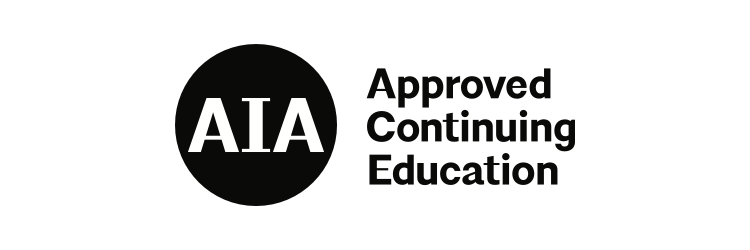Northeast
EVENT THEME
Detailing High-Performance Facades: Cladding Decisions and Sealant Strategies
Today’s high-performance facade standards require the deft balancing of aesthetics, technical detailing, and the demands of the client and local building regulations. This workshop will discuss both material and technical solutions to meet those standards. Experts will be on hand to lead tutorials on the most recent innovations in rainscreen cladding, sealant solutions, and much more. Attendees will leave with a greater knowledge of material applications at the cutting-edge of energy performance and code compliance, all while learning of attractive solutions for clients and end users.
view_agenda Agenda
10AM - 11AM
Credit type: 1 LU/HSW
Provider: Cladiator
How cladding is attached and supported from the exterior of the wall assembly to the interior structure of the building is no longer just a question of transferring weight. The type of support system used can greatly affect energy performance, air and moisture penetration into the wall cavity, and the effectiveness of the finished design.
Over the last ten years cladding support systems have advanced to address the needs of modern buildings, to meet new code requirements and avoid the causes of issues inside the wall cavity as we learn more about how to select products that work well together – from both a performance and constructability standpoint.
This course walks through the various types of newer cladding support systems on the market today with a goal to help bring more value to the design and product selection process and subsequently to the occupants of new and restored buildings for the future.
Learning Objectives
- Understand some of the differences between different cladding support systems on the market today and how they can best serve the design process.
- Explain how to improve energy efficiency of exterior walls & meet changing code requirements using more advanced cladding support systems.
- Briefly discuss options to manage the balance between design and load challenges.
- Explore methods to attach panels that will improve thermal performance and cause less punctures to the waterproofing layer.
11AM - 12PM
Credit type: 1 LU/HSW
Provider: Kingspan Insulation
Insulation has come a long way from the days of traditional foams, fiberglass and mineral fiber products. Today’s rigid insulation board technologies offer architects and builders choices that can optimize energy efficiency, moisture resistance and fire performance – and provide thinner walls to increase leasable space and ROI. Specific rigid insulation board technologies are suitable for foundations, floors, walls, and soffits. By understanding these technologies, architects can select the best insulation type for each part of a project.
Learning Objectives
- Describe the three methods of heat transfer and how insulation addresses each one.
- Describe several types of rigid insulation board technologies and their “fitness for use” in different applications.
- Discuss strategies for designing thinner walls while maintaining or increasing thermal performance.
- Identify the fire performance characteristics of different rigid insulation board technologies.
12PM - 1PM
Credit type: 1 LU/HSW
Provider: Schöck
Concrete slabs and steel beams that project through the building envelope, such as those used in balconies, canopies and parapets, break the insulation layer and create thermal bridging. Incorporating a thermal break significantly improves the thermal performance of building envelopes and helps avoid costly issues down the road. This course addresses thermal bridging solutions, as well as design best practices and local building code requirements related to structural thermal breaks.
Learning Objectives
- Understand how, why and where thermal bridging occurs
- Identify the three main problems caused by thermal bridging
- Discuss the pros and cons of different approaches to addressing the problem
- Know how, when and why to use structural thermal breaks, including local code compliance
1PM - 2PM
Credit type: 1 LU
Provider: SOCOTEC
Highlight 2022 Building Code Changes and compare to current 2014 Code. Present fireblocking details being used under current code and changes that will need to be made to comply with new code.
Learning Objectives
- Identify building code requirements governing the use of combustible materials in exterior walls
- Define the concept of fireblocking and how it can be achieved
- Explore examples of fireblocking in cavity walls with foam plastic insulation
- Review the limitations of composite cladding materials featuring combustible components, such as insulated metal panels











